[Supply Chain Central] Is your business ready for FY23?
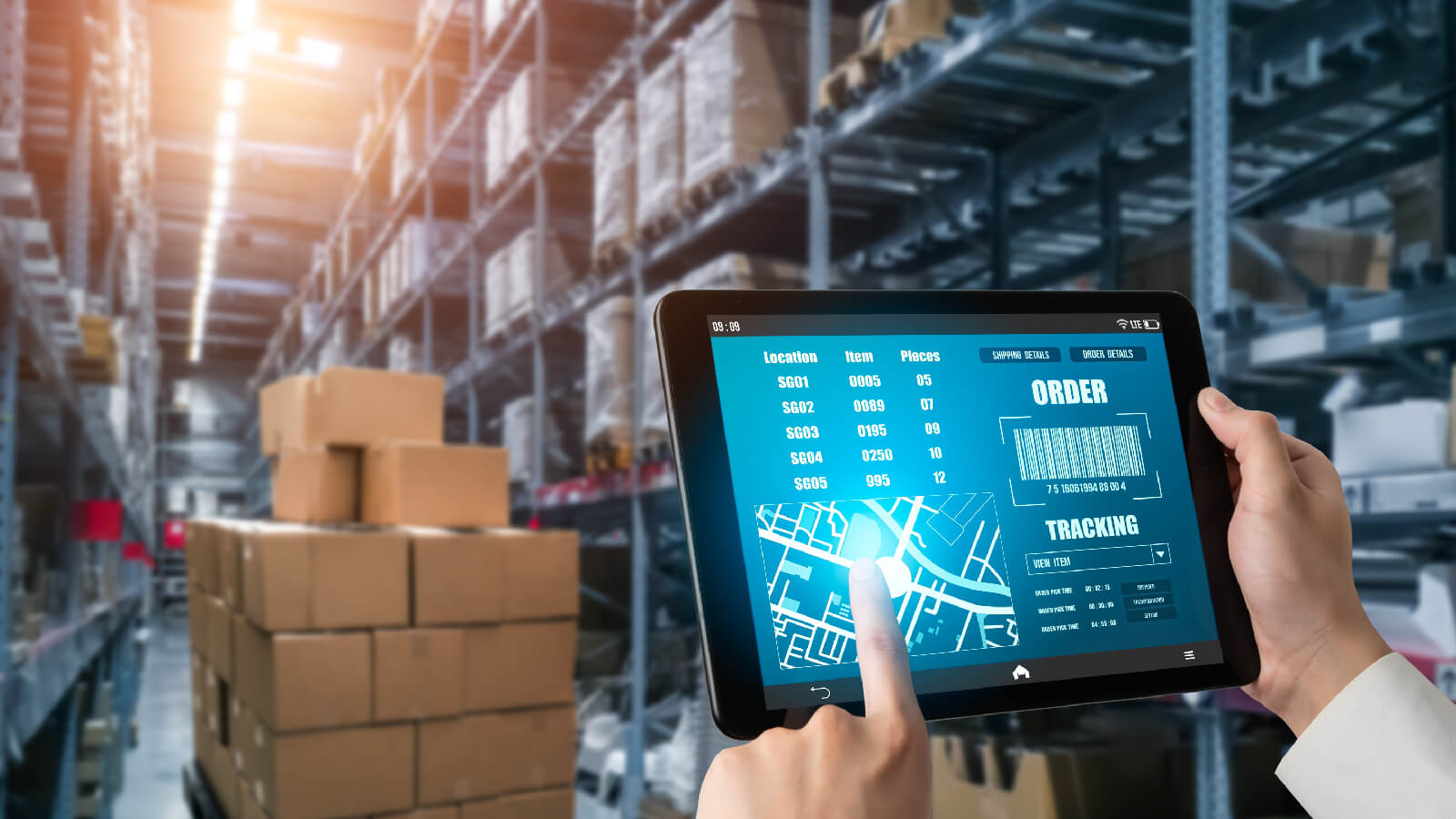
[Supply Chain Central] Is your business ready for FY23?
The year 2023 has arrived, and with it, a new era of supply chain management trends. Businesses must be ready to adapt to these changes to remain competitive in the global market.

As we continue to recover from the pandemic, the supply chain has become even more critical, and many organizations are investing time and resources in supply chain management to mitigate the disruptions of early 2022.
Notably, a recent McKinsey report highlights that 67%(1) of respondents have adopted digital tools for end-to-end supply chain visibility.
This article discusses some key supply chain management trends to watch for in 2023.
Digital Revolution of Supply Chains: The Future is Now
The shift toward digitization may be the most significant trend in supply chain management in 2023. As the world becomes more connected, companies will embrace digitization on a large scale to stay ahead of the competition.
Digitization of supply chains requires implementing the internet of things (IoT), cloud-based networks, artificial intelligence, and machine learning. These digital tools help businesses to track, monitor and analyze every aspect of the supply chain management process.
By adopting these tools, companies can streamline their supply chains, develop new revenue streams, and tap into new markets.
Green is the New Gold: Prioritizing Sustainable Supply Chains
With the rising global emphasis on environmental sustainability, businesses will prioritize sustainable supply chains. Investors, including private equity firms and venture capitalists, are increasingly opting for sustainable organizations in their portfolios.
Thus, companies will look to demonstrate a commitment to sustainability to gain a competitive edge in funding and attracting investors.

To achieve sustainable supply chain operations, businesses will adopt green logistics practices that are environment-friendly. This can include investing in energy-efficient technologies and utilizing sustainable packaging materials.
Environment, Social, and Governance (ESG) focused procurement decisions will also gain momentum for implementing sustainable supply chain management processes.
Don’t Fall Behind: How Partnerships are Changing the Supply Chain Landscape
Don’t miss out on the opportunity to stay ahead of the competition by harnessing the power of supply chain integrations. The year 2023 is expected to witness a proliferation of supply chain components due to many companies pursuing cost reduction and enhanced customer service.
As a result, companies that fail to integrate with third-party service providers risk falling behind.
In 2023, integration with third-party service providers will become common for reducing overall freight expenses and optimizing the supply chain.
Moreover, companies will seek partnerships with other enterprises that leverage digital solutions to improve delivery estimation accuracy and minimize administrative work. This would further enhance the overall efficiency of supply chain management.
Future-proofing Your Supply Chain: Building Risk and Resilience
In today’s complex and unpredictable business environment, managing supply chain risks and building resilience has become a critical priority for companies. These risks can emerge in various forms, from natural disasters that disrupt the flow of goods to cyber-attacks that jeopardize sensitive data.
To address these risks, companies will embrace an array of strategies including the following:
- Supplier diversification– Companies will adopt strategies to mitigate the risks of overreliance on a single supplier. Supplier diversification will become a key priority as companies seek to avoid the impact of supply chain disruptions.
- Localizing production and transportation– Businesses will seek to reduce the distance between the manufacturing plant and end customers and transport goods through local channels, such as short-haul trucking or rail transport.
- Forging non-traditional partnerships– Companies will seek to expand their network of partners to tap into new sources of innovation, secure access to specialized talent, and access new markets.
A robust supply chain design will be adopted to enable quick recovery from adverse events, provide superior customer service, and increase the market share.
Big Data, Big Benefits: Leveraging Big Data and Analytics
Big data and advanced analytics will power the future of the global supply chain. The ability to collect and analyze vast amounts of data will provide greater visibility, synchronized planning and execution, data-driven decision-making, and profitability.

By leveraging these technologies, companies can optimize their supply chains, improve delivery times, and enhance the overall customer experience by identifying patterns and trends. Implementing algorithms and robotics will further drive efficiency and productivity, making big data and analytics the cornerstone of future-proof supply chain operations.
Cybersecurity for the Win: Protecting Your Supply Chain from Modern Threats
As businesses continue to expand their digital footprint, the threat of cybercrime becomes more prevalent. The supply chain, in particular, is increasingly vulnerable to attacks from cybercriminals seeking to gain access to sensitive data.
To safeguard against these threats, companies are adopting a proactive approach to cybersecurity. This includes investing in anti-hacking systems, implementing firewalls, providing employee training, and building stronger relationships with supply chain partners.
Through collaboration and coordinated efforts, businesses are protecting their assets and people from cyber threats, ensuring the resilience of their supply chains.
Reshaping the Map: The Rise of Domestic Self-Sufficiency
Geopolitical tensions have promoted domestic self-sufficiency in material supply and manufacturing.
As nations grow more skeptical of cooperation and interdependence, governments seek to secure the supply chain. They’re exploring domestic production capabilities and ‘friend-shoring’ relationships with like-minded and geographically proximate countries.
This approach provides a more secure supply of goods and mitigates the risk of material unavailability or supply chain disruption due to geopolitical tensions. Thus companies may have to restructure their supply chains in 2023.
Capitalizing on Supply Chain Management Trends 2023
The trends in supply change management in 2023 will transform how businesses operate. At Moglix, we are well-equipped to help companies to navigate these changes, capitalize on opportunities and stay ahead of the curve.
We understand the challenges businesses may face as they seek to adapt to these changes in the supply chain landscape. Contact us to learn more about how we can help your business optimize its supply chain management strategy.
Additional Reading:
Rethinking Procurement: How e-Procurement Solutions Outshine Traditional ERPs!
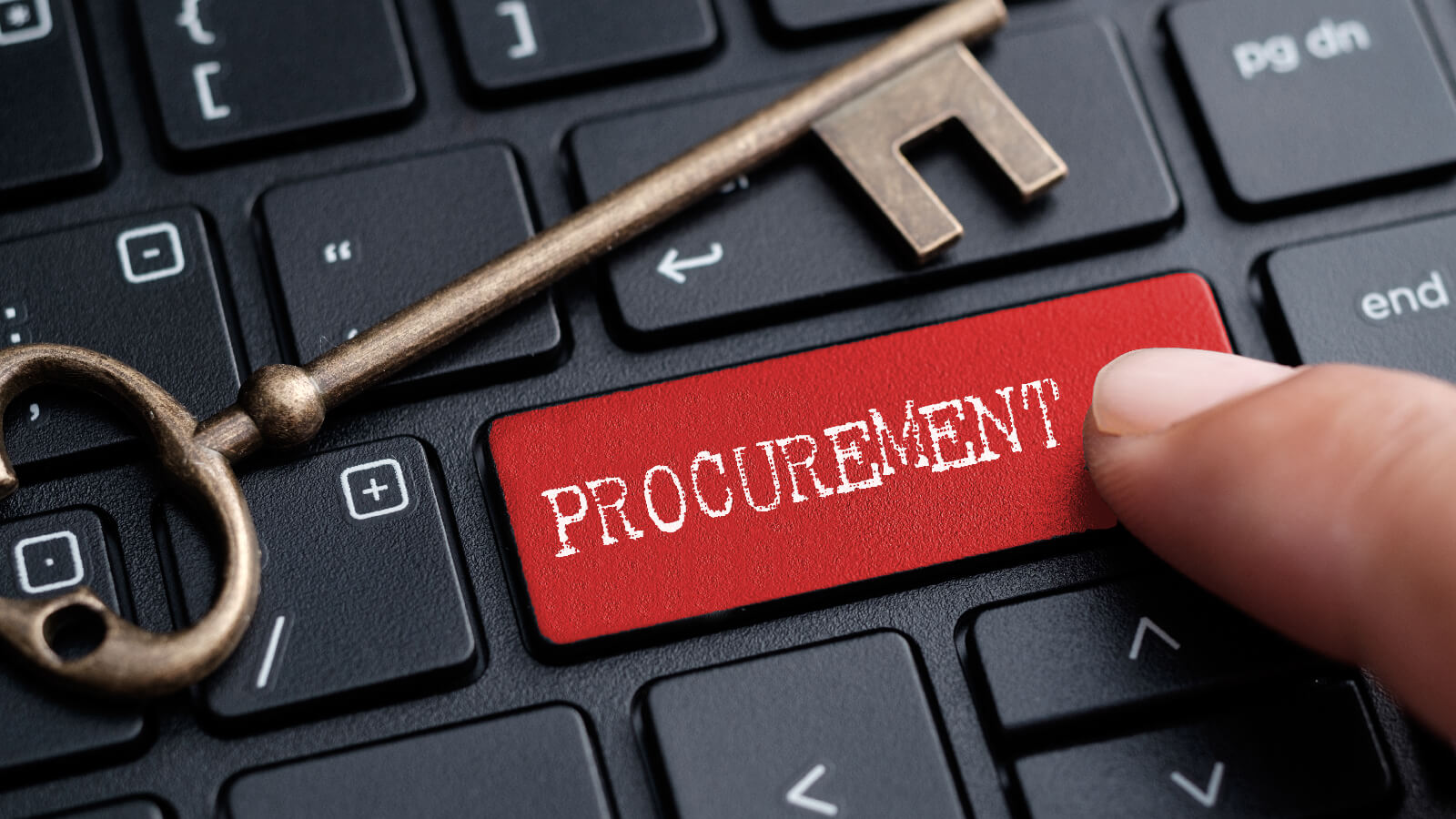
Rethinking Procurement: How e-Procurement Solutions Outshine Traditional ERPs!
Over the past few years, the procurement industry has experienced a significant transformation due to the widespread adoption of e-commerce and the advancement of the internet. As a result, nearly 68%(1) of B2B buyers now purchase goods online.
More specifically, the procurement preference of B2B buyers has shifted towards dedicated solutions rather than relying on the procurement modules of traditional ERP systems. This shift is happening due to the unique advantages offered by dedicated e-procurement solutions, such as enhanced transparency, increased efficiency, and improved supplier relationships.
This blog will delve deeper into the benefits of using e-procurement solutions.

Competitive Advantages of e-Procurement Solutions
E-Procurement solutions have become increasingly popular among businesses due to their significant competitive advantages over traditional ERP systems. While an ERP system integrates business processes and is generally built for finance departments, it lacks the specialized features required for effective procurement management.
In contrast, an e-procurement solution is designed specifically to manage procurement functions.
So what are the competitive advantages of e-Procurement solutions?
1. Procure Smarter, Not Harder: Leverage Automation with e-Procurement Solutions
Procurement operations can be made more efficient and cost-effective with automation. Unlike ERP systems, which often involve manual processes, e-procurement solutions offer fully integrated and automated processes.
By utilizing the benefits of automation, you can accelerate the procurement process, minimize errors, and streamline the entire digital procurement value chain.
2. Unlock Flexibility with e-Procurement Solutions
Traditional ERP tools can handle basic procurement, but for a broader range of procurement strategies, e-procurement solutions offer more adaptability. These solutions make managing complex proposals that involve multiple geographies, stakeholders, and suppliers easier.
With an e-procurement solution, you can customize and tailor the tool to suit your specific procurement needs.
3. Maximize Cost Savings with Analytics
A recent study by Deloitte found that e-procurement can result in a 60% reduction in operational costs.
4. One Stop Shop for Business Insights: Benefits of Data Consolidation
With the help of a procurement analytics tool in-built into an e-procurement solution, you can transform your organization’s spending practices by obtaining real-time tracking of costs. Better cost monitoring can help allocate resources toward more strategic initiatives.
An e-procurement solution can streamline your business by consolidating key areas such as purchases, sales, inventory, and finance. With all your business data in one place, you can quickly gain valuable insights and make informed decisions without sifting through multiple reports.
Unlike ERP tools, which lack comprehensive data presentation, e-procurement solutions offer a holistic view of your business operations.
5. Stronger Supplier Relationships
An effective e-procurement system can lower transaction costs, decrease supply chain risks, and enhance supplier collaboration and transparency. With better supplier management, your organization can build stronger strategic partnerships while reducing overall risk.
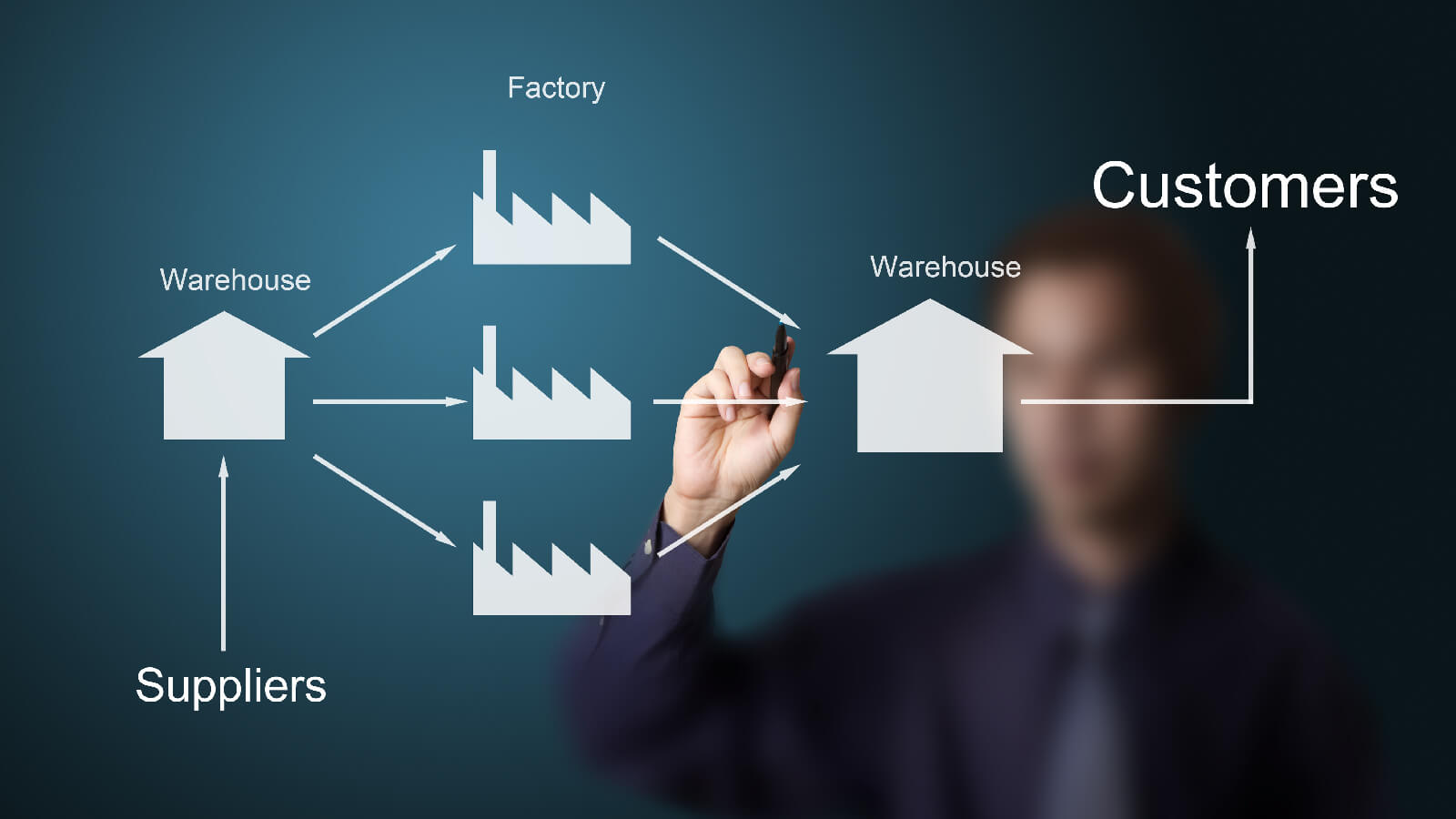
Embrace the Future of Procurement with e-Procurement Solutions
As a result of these advantages, a survey conducted by McKinsey(3) found that CPOs believed that digital procurement could lead to a 40% increase in annual savings, 30-50% less time spent on sourcing, and a 50% reduction in value leakage.
Businesses can unlock numerous benefits by selecting dedicated procurement solutions that enable them to optimize procurement processes, make informed decisions, and build stronger strategic partnerships.
An ideal sourcing solution can help achieve better visibility over the supply chain, reduce procurement costs, and drive business growth. Learn more about Moglix to understand how our sourcing solutions can lead you into the future of B2B commerce and supply chain management.
Additional resources:
1. E-Procurement: Its Future in the Digital World
2. https://www2.deloitte.com/hu/en/events/esemenyek/2021/a-beszerzes-jovoje-2022.html
Mastering the Art of Supplier Relationship Management (SRM): Key Strategies for Sustainable Relationships

Mastering the Art of Supplier Relationship Management (SRM): Key Strategies for Sustainable Relationships
Almost 68%1 of CPOs state that supplier management will be their top priority going forward for achieving strategic business outcomes. This makes most sense, as effective supplier relationship management (SRM) enables businesses to get deeper insights into pricing trends, raise profitability, and improve their cost baselines—at times, by 5–10%2—by innovatively collaborating with their suppliers.
Yet, nearly 49%3 of procurement managers have failed at transforming their supplier relationships. So, how can you avoid their fate and gain greater visibility into your suppliers’ relationships to ensure long-term success?
The Problem With Supplier Relationships
Regrettably, supplier relationships are often marred by an over-emphasis on cost-cutting and a lack of trust. To add fuel to the fire, communication gaps and misalignment of goals worsen this relationship further.
So to effectively deal with these challenges and ensure greater supply chain continuity, firms must focus on building strategic and value-based ties with their suppliers.
5 Strategies for Building a Resilient Supplier Management Framework
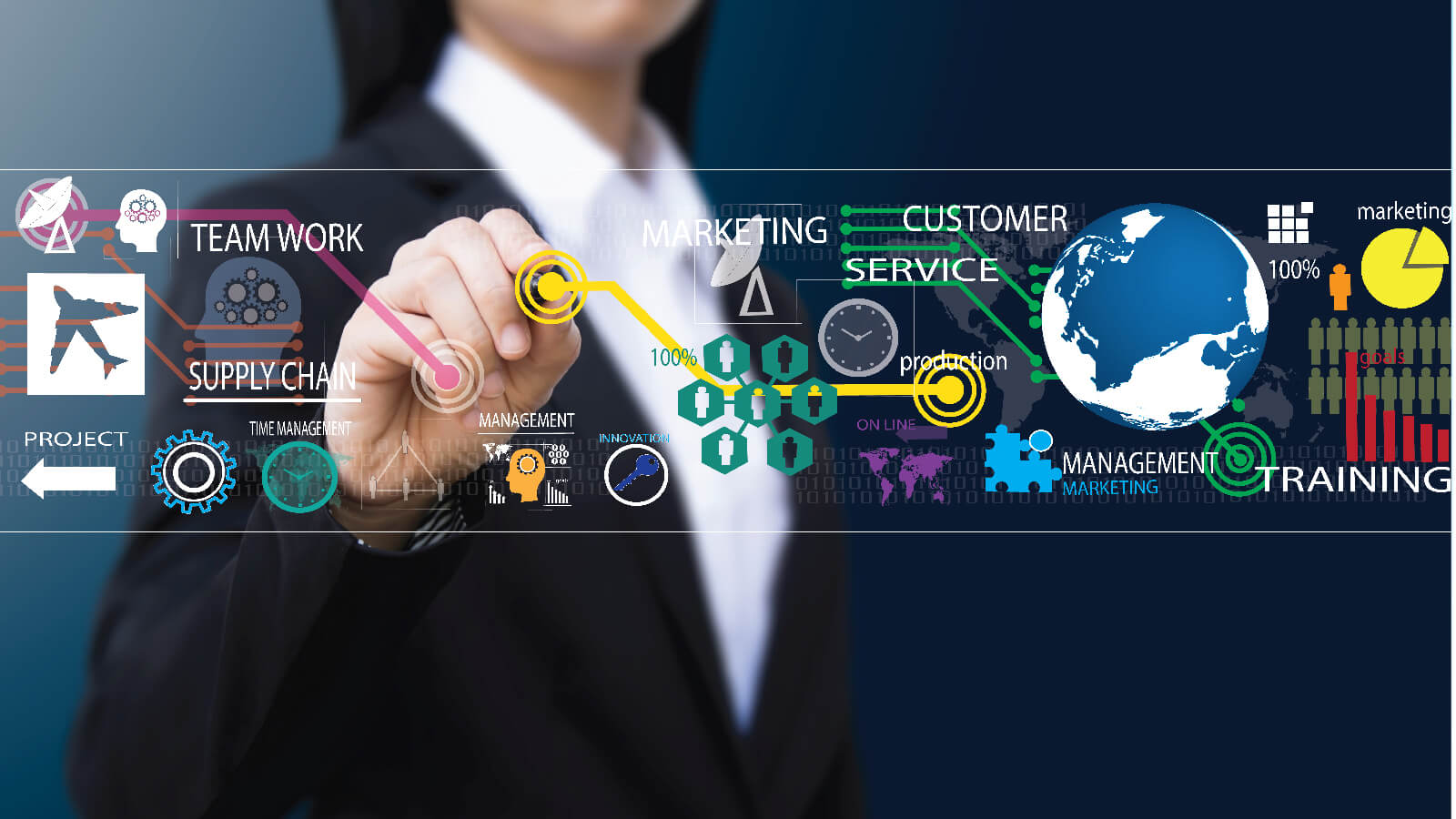
Strong supplier relationship management (SRM) entails a structured approach to evaluating diverse vendors and their strategic importance to the firm. Firms can configure successful supplier relationship management by adopting the following strategies:
Segment Your Suppliers Per Their Relative Importance
- Supplier segmentation, i.e., the practice of classifying suppliers into different categories based on their strategic importance to the firm is the most fundamental step of effective supplier management.
- Generally, managers default to the Kraljic Matrix for undertaking supplier segmentation. It assesses suppliers on their profitability and risk, classifying dealers with a high-profit impact and higher risk as strategic and relegating others as transactional.
- Alternatively, you can also opt for the Pareto principle, which necessitates that 20% of suppliers must account for 80% of buyers’ spending.
- Essentially, the goal is to direct your resources to the suppliers with the highest impact.
Create A Supplier Management Framework
- To foster solid collaborative relationships, firms must design a governance framework, which clearly defines the goals, objectives, and responsibilities of both the suppliers and the buyers.
- Clear communication lines should also be established to ensure all parties are on the same page at all times.
- Moreover, you must develop detailed contracts that clearly outline your expectations about quality parameters, lead times, and payment terms.
- Finally, you should have a risk management plan in place to help tide over unforeseen circumstances, such as supply chain obstructions (like COVID-19) or supplier failures.
Establish KPIs for Monitoring Supplier Performance
- The key to efficacious supplier performance management lies in establishing key performance indicators (KPIs), such as defect rates, order accuracy, cost savings, etc.
- These KPIs can vary per segment and must be continuously monitored to remain cognizant of any supply chain risk (cue-Suez canal crisis).
- You can, additionally, arrange periodic meetings at various executive levels to discuss strategy and goals, track performance, and clear roadblocks.
Be A Good Customer, Pay Your Suppliers on Time
- Supplier relationship management is not exclusively restricted to what suppliers can and should do for you.
- It also entails buyers keeping their end of the bargain by making payments as per the agreed terms.
- Firms must strive to pay on time unless constrained by exigencies—in which case, effectively communicating your limitations is the path to tread.
Leverage Technology for Better SRM
- Tech-driven solutions, like SRM software, aid supplier management by offering a comprehensive overview of suppliers and their risks.
- They can further augment your supply chain and digitize procurement by automating daily operations, simplifying onboarding, and providing extensive inventory management visibility.
Unlock the Potential of Your Supplier Relationships with Moglix
Effective supplier relationship management is indispensable for firms looking to cut costs, improve bottom lines, and add value to their supplier relationships. And Moglix is the perfect go-to collaborator that can help you achieve this and more—as it has done already for an automotive OEM.
Moglix’s supplier consolidation solution assisted the OEM in resolving the difficulties of a fragmented supplier base, bad credit terms, and working capital blockages, resulting in a colossal 2% cost savings! Download the case study to learn the finer details.
Additional resources:
2. https://procurementleaders.com/content/supplier-collaborations-success-research
Demystifying the Procure-to-Pay Cycle: A Quick Guide
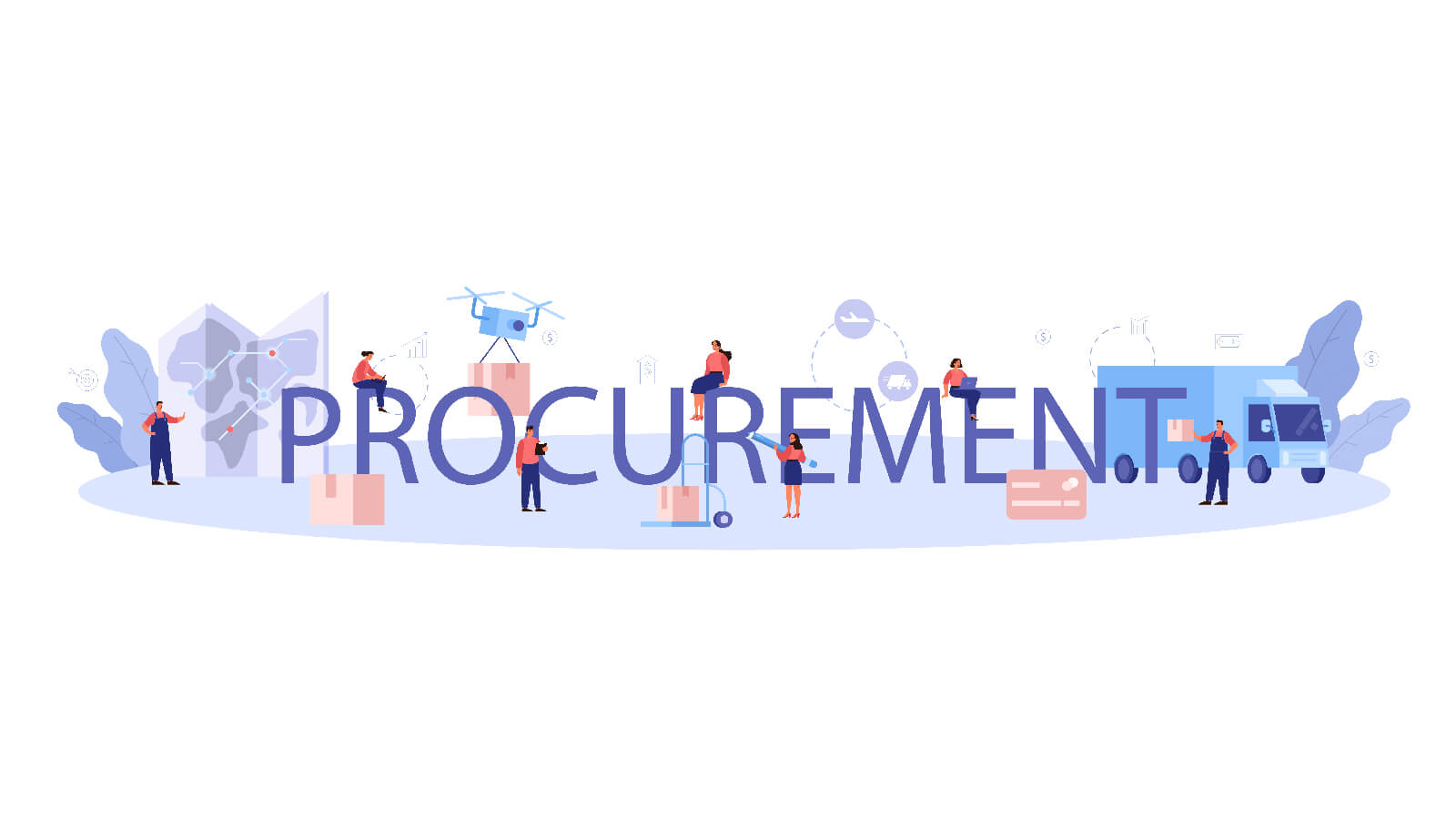
Demystifying the Procure-to-Pay Cycle: A Quick Guide
With the rise of digital technologies such as automation, and advanced analytics, procurement operations are undergoing a transformation. In fact, the global software market will be worth $9.5 billion by 2028(1).
A recent study(2) shows that almost half of all procurement activities can be automated using existing technologies. One such process that has the potential to greatly benefit from these advancements is the Procure-to-Pay (P2P) process.
But is the P2P process relevant for your company? If yes, how can it benefit you in the long run? Continue reading as we explore the procure-to-pay process in detail and answer your questions.
Decoding the Procure-to-Pay Process
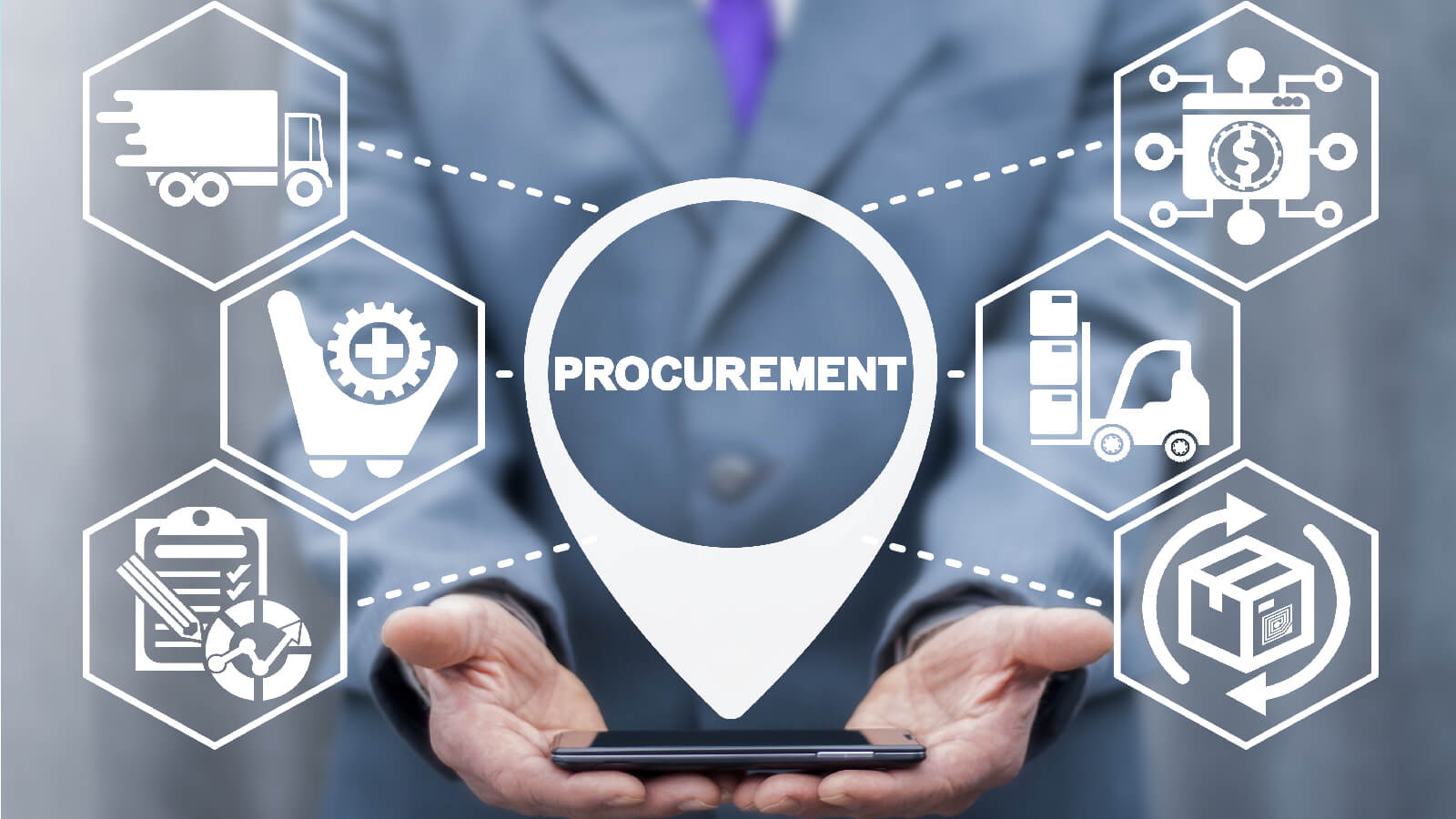
Procure-to-Pay encompasses activities and tasks, such as sourcing, procurement, invoicing, and payment, which come together to form the P2P cycle.
The P2P process is typically managed by a procurement or purchasing department, designed to ensure that the organization purchases goods and services promptly and cost-effectively while maintaining control over spending.
It starts with the identification of a business need and ends when you make the payment to the supplier. Effective management of the P2P process helps ensure you pay the right amount for the right goods or services at the right time. This improves your relationship with your suppliers and overall financial visibility and control.
The process involves several steps that come together to form the P2P cycle, which we will explain in the next section.
Steps Involved in the Procure-to-Pay Cycle
The P2P cycle steps include requisition and approval, purchase order creation and confirmation, goods and invoice receipt, invoice approval, payment, and close-out. Let’s dive into these steps and see what they actually are.
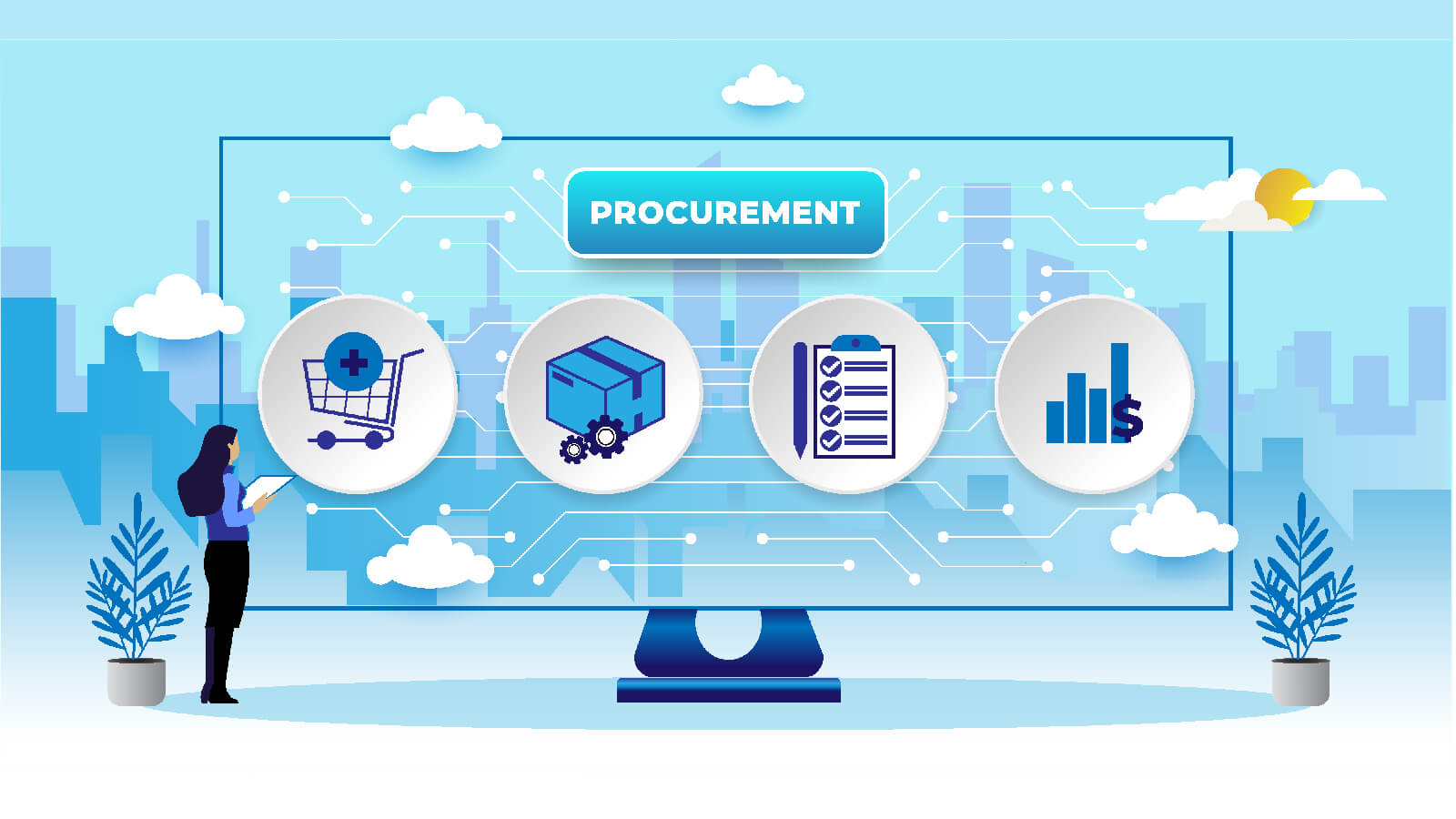
Get the Go-Ahead
The P2P cycle begins when a need for goods or services is identified. The request for the product is usually identified using an enterprise resource planning (ERP) system or procurement management software. The request is then reviewed and approved by the management.
Seal the Deal
After approval, the procurement team identifies potential suppliers. It evaluates its capabilities based on product quality, delivery times, and prices.
At this stage, the most suitable supplier is selected based on price quotations and the required product specifications. The supplier is usually given confirmation via a confirmation email.
Then, a purchase order (PO) is created and sent to multiple suppliers via either procurement software or an ERP system. A PO is a legal contract between an organization and its supplier, and contains the details of the product required, the delivery date, and the expected price.
Time for Delivery
The goods or services are received from the supplier, and the receiving department confirms that the items match the specifications in the purchase order.
Double Check for Accuracy
The supplier invoices the organizations after the receipt of the goods, including details such as the amount owed and payment terms.
The finance department verifies the invoice against the purchase order and approves it for payment. They may use invoice management software or ERP to ensure the invoices match the PO. If not, the discrepancies are resolved at this stage.
Pay Like a Pro
Finally, the supplier is paid for the products via a payment management system or ERP. The payment process is usually transparent, secure, and compliant with the organization’s financial policies.
At this stage, the procurement team often follows up with the supplier to ensure all aspects of the transaction have been completed. Then the order is closed out.
As the organization’s size increases and the processes become more complex, companies use various tools and software like procurement management software, ERP systems, and invoice management software to automate and streamline the P2P cycle. This makes the P2P process much more efficient and reduces the risk of errors.
Benefits of the P2P Process
The purchase-to-pay process is not intended to speed up payments to vendors. Rather, its goal is to improve the efficiency and financial control of the company. Some benefits of a P2P process cycle are as follows:
- It streamlines the procurement process by connecting the different departments in a firm, making all points of information trackable.
- A P2P process, when implemented using a procurement solution, can help reduce invoice processing costs and improve efficiency.
- The process makes communication between vendors and companies transparent, improving their relationships.
- When suppliers know payment schedules and details, they will be more open to accepting terms that are more beneficial to buyers.
P2P is the Future of Procurement Solutions
The majority of procurement teams are feeling pressured to respond to challenges quickly and effectively. While the complexity of the process can be daunting, there are solutions available that can help organizations streamline and optimize their procurement processes. The P2P process is a critical function that requires careful management and attention to detail, particularly for large enterprises.
For example, the case study of one of India’s largest infra developers shows how a business can scale up its turnover growth by 2x in just a year by implementing an end-to-end P2P solution. By leveraging the right procurement tools and technologies, businesses can not only reduce costs and minimize risk but also achieve significant business outcomes.
So, whether you are using manual or semi-automated tools, it’s worth considering how a comprehensive P2P solution can improve your procurement process and boost your bottom line. Or, you can even partner with companies like Moglix, which specialize in providing end-to-end procurement solutions to businesses.
Additional resources:
Women on Boards: The Key to Unlocking Cultural Transformation in Organization
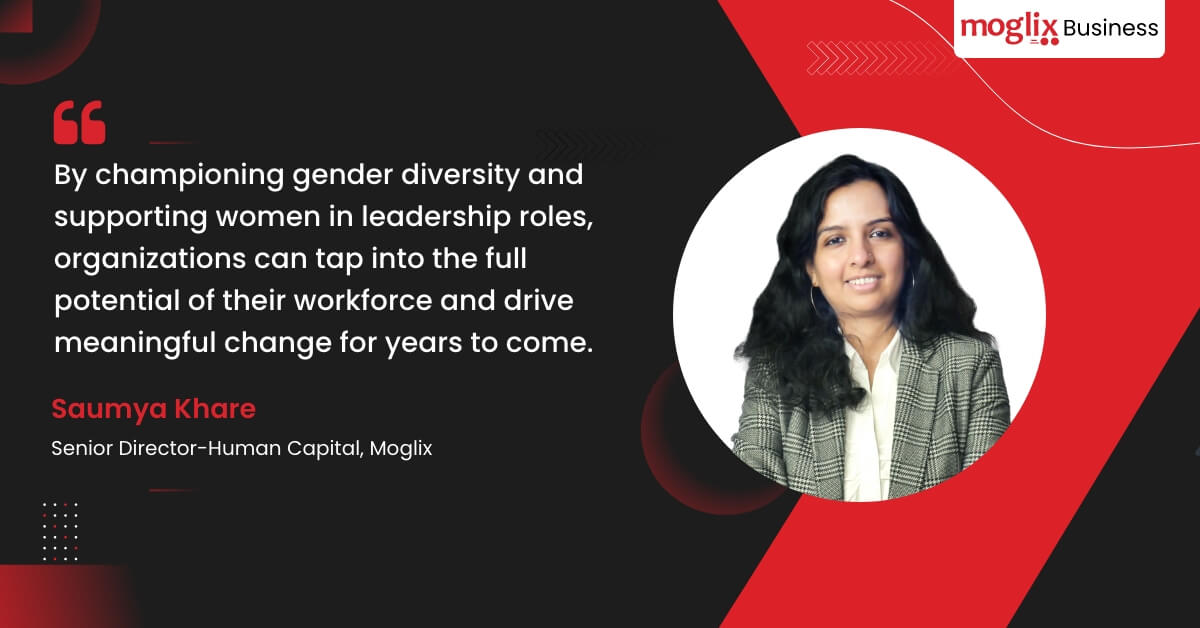
Women on Boards: The Key to Unlocking Cultural Transformation in Organization
With their unique perspectives, values, and leadership styles, women are shaking up the business world and instigating cultural change in organizations across industries.
Research has shown that organizations with 25% women in decision-making positions had a 4% better average return on investment. Why is this so?
- Women are increasingly becoming power spenders: According to a Nielsen study, by 2028, it is projected that women will account for a whopping 75% of purchases worldwide, meaning companies are overlooking tremendous growth potential if they are not considering women when developing their products.
- Firms win when women lead
Manufacturing Success: Why Women Workplace Safety is Non-Negotiable

Manufacturing Success: Why Women Workplace Safety is Non-Negotiable
As we celebrate National Safety Week (from 4th to 10th March) & International Women’s Day (on March 8th), it is time to reflect on the challenges women face in the workplace with something as rudimentary yet non negotiable as workplace safety. Women have traditionally been confined to conventional roles, which has prevented them from realizing their full potential. However, there has been a shift towards more women joining the workforce, and they will play a critical role in India’s growth story. According to a study by McKinsey, advancing women’s equality in India could increase GDP by $770 billion by 2025.
Despite the increasing number of women in the workforce, women’s participation in the male-dominated manufacturing sector remains low. In 2019-20, of the 8 million workers employed in India’s formal manufacturing industries, only 1.6 million (19.7%) were women(2). This highlights the need to encourage more women to consider manufacturing a viable career option. The manufacturing sector has the potential to empower women economically and socially, but this can only happen if they are safe at work.
Unsafe and Unheard: Women’s Struggle for Safety in Manufacturing Facilities
Despite making strides in breaking gender barriers, women in the manufacturing sector face significant challenges. Safety is a primary concern for women working in these facilities. Unfortunately, they are often subject to sexual harassment, discrimination, and violence. In many cases, these facilities may not have sufficient training programs, safety equipment, or procedures to ensure women can operate safely. This can lead to severe injuries and create a sense of insecurity among women.
The effects of these challenges extend beyond physical safety, impacting women’s mental health and overall well-being. It is crucial to prioritize safety measures and address these issues to create a safer and more inclusive work environment for women in manufacturing.
Breaking Barriers: India’s Fight for Gender Equality in Manufacturing
Recognizing the challenges faced by women in manufacturing, the Indian government has implemented measures to ensure their safety. For example, the Sexual Harassment of Women at Work Place (Prevention, Prohibition and Redressal) Act, 2013 (POSH Act) mandates the creation of committees to investigate complaints of sexual harassment and requires companies to provide a safe working environment for women. Alongside this, the Ministry of Women and Child Development has launched initiatives promoting gender equality in the workplace.
But it’s more than just the government taking action. Private sector companies are also implementing measures to ensure women’s safety. Gender-sensitive policies such as sensitization workshops and mandatory employee training have been established alongside committees to address complaints of sexual harassment. These efforts have made manufacturing facilities safer and more welcoming for women, empowering them to pursue their careers confidently.
Manufacturing a Better World: Women’s Empowerment through Safety
Women are crucial to the growth of India’s manufacturing sector, and their safety is vital to their success. While there have been significant challenges, positive steps have been taken to ensure their safety. However, we must continue to work towards creating a safe and inclusive workplace for women in manufacturing facilities. At Moglix, we are committed to the cause of women’s safety in the workplace and offer comprehensive safety solutions (products & services) specifically crafted for women at workplace. Contact us today and partner with us to build a safer environment for women.
From Fatalities to Foresight: How India is Tackling Workplace Hazards Head-On
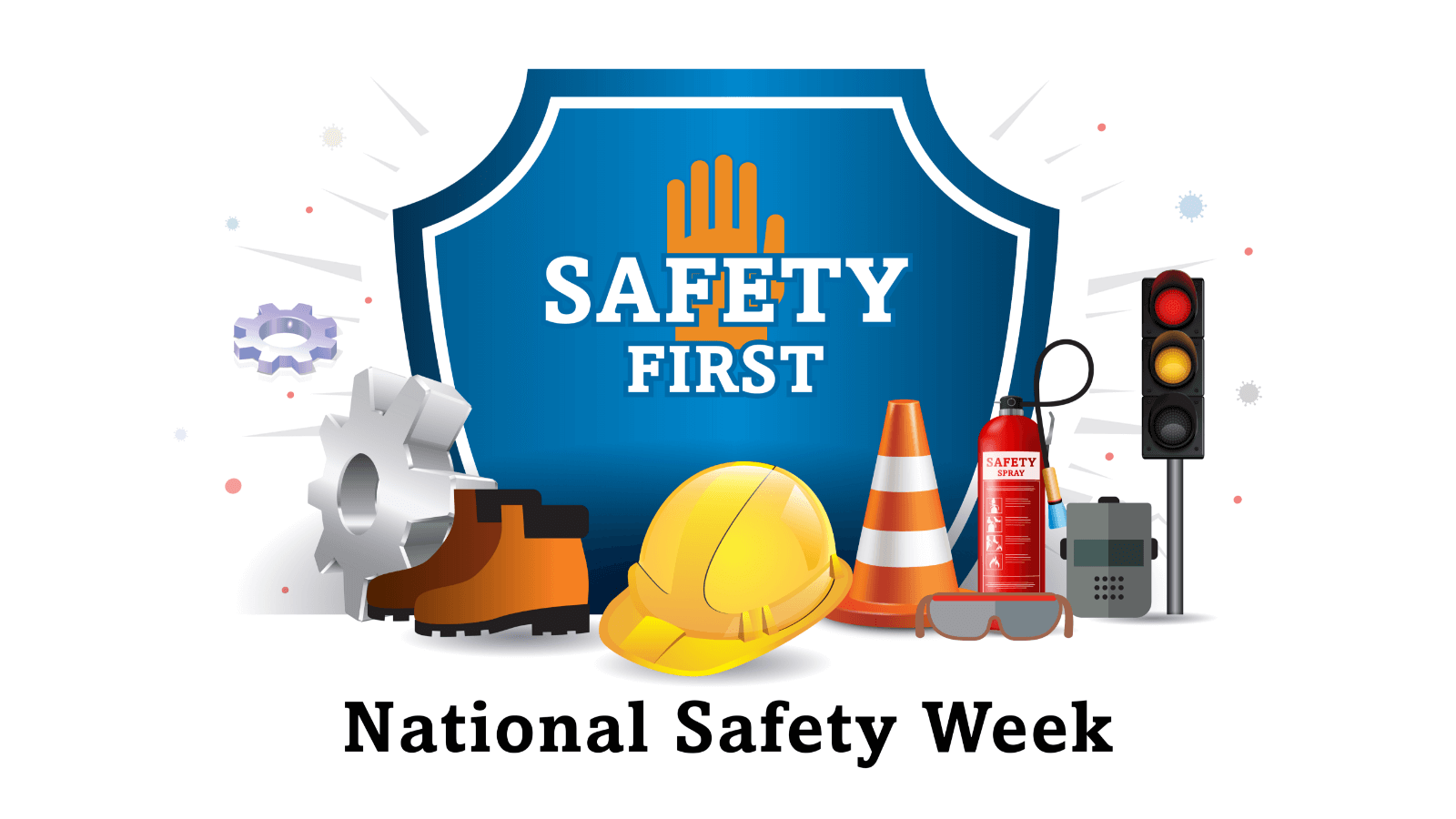
From Fatalities to Foresight: How India is Tackling Workplace Hazards Head-On
The significance of ensuring workplace safety cannot be overstated, as it not only enhances the prosperity of businesses but also promotes the well-being of employees. In India, a nation with a burgeoning economy and an enormous workforce, industrial safety holds a particularly critical position.
The problem of industrial safety is evident from the numbers. According to data from the Directorate General Factory Advice Service & Labour Institutes (DGFASLI)(1), there were 1,050 fatal workplace injuries in the year 2020, which translates to an average of nearly 3 deaths per day.
Despite laws aimed at safeguarding workers and promoting occupational safety, their effectiveness is often limited by a prevailing cultural attitude towards workplace safety that hinders proper implementation. Thus, there is a need to adopt a multifaceted solution that considers regulatory compliance and improves safety culture, including the attitudes, beliefs, and values that shape workplace behavior.
From Crisis to Consciousness: How India is Ushering in a New Era of Industrial Safety
It was only after independence that India got the opportunity to take measures to improve industrial safety. The Factories Act of 1948 was India’s first major legislation on industrial safety. It aimed to ensure factory workers’ safety, health, and welfare. Subsequently, several amendments were made to make it more comprehensive and practical.
In 1984, the Bhopal gas tragedy killed thousands, highlighting the need for more robust safety measures in industries. This led to the Environment (Protection) Act 1986, which aimed to protect and improve the environment and prevent hazards to human beings, other living creatures, plants, and property.
The National Safety Council (NSC), established in 1966 by the Ministry of Labour and Employment, has actively guided and provided services to promote safety awareness and safe work practices. In recent years, there have been focused efforts by organizing safety campaigns to address the root cause of workplace hazards, which often lies in a lack of awareness and education.
The NSC’s National Safety Week campaign is a crucial contributor to creating safety awareness and establishing safety standards across all sectors. The week-long campaign commences on March 4th of every year. It encourages employers to involve their employees in Safety, Health, and Environment (SHE) activities, thereby promoting workplace behavior and hazard prevention improvements by both employers and workers.
Beyond Compliance: How Technology and Specialized Services are Shaping Industrial Safety Culture in India
Besides legislative and institutional measures, technological advancements have also significantly enhanced industrial safety in India. For instance, the emergence of Industry 4.0, focusing on automation, machine learning, and the Internet of Things, has led to the development of more innovative and safer industrial systems.
Furthermore, various private and public organizations have emerged in recent years to provide specialized services in industrial safety. These organizations offer training, certification, and consulting services to businesses and individuals on various aspects of workplace safety, such as hazard identification, risk assessment, and emergency response.
Ensuring Workplace Safety: The Key to Sustainable and Inclusive Growth in India
Industrial safety is and will have to be a critical aspect of India’s growth story, and efforts to improve it should be a priority for all stakeholders. Moreover, the COVID-19 pandemic has brought to the fore the need for a more comprehensive approach to workplace safety that includes not just physical hazards but also biological ones.
As India continues to pursue its path of economic growth, it is essential to ensure that this growth is sustainable and inclusive and that workplace safety is an integral part of it. At Moglix, we recognize the need for a safety-conscious workforce and offer comprehensive safety solutions to create a safer work environment. Contact us today and partner with us to build a safer and more sustainable India.
Uncovering the Advantages and Challenges of Quiet Hiring in Today`s Job Market
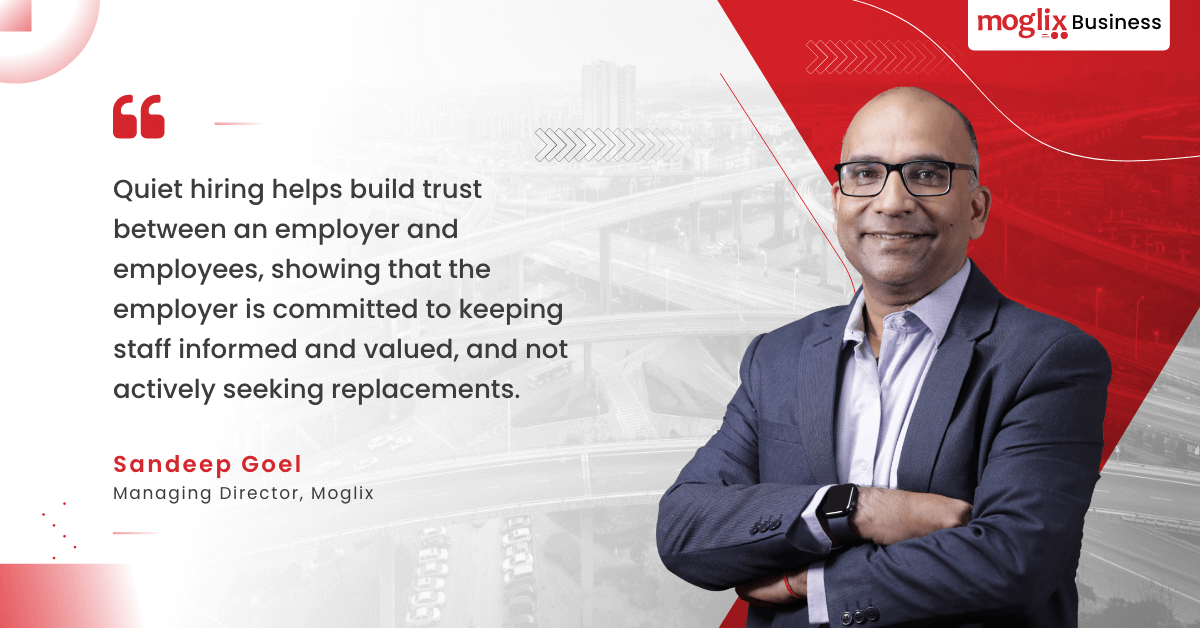
Uncovering the Advantages and Challenges of Quiet Hiring in Today`s Job Market
Experts at Gartner recently listed quiet hiring as one of the top workforce trends for 2023. According to Emily Rose McRae, Sr. Director of Research at Gartner, “Quiet hiring is when an organization acquires new skills without actually hiring new full-time employees.”
The rise of quiet hiring is not just a response to the pandemic. It is part of a broader trend toward more personalized and targeted hiring. Employers are increasingly using data analytics, social media, and other tools to identify and attract the right candidates for their specific needs, rather than relying on generic job postings or mass hiring campaigns.
Saving the Planet One Weld at a Time: How Sustainable Welding can Make a Difference

Saving the Planet One Weld at a Time: How Sustainable Welding can Make a Difference
Welding is a critical process in various industries, with millions of welders working around the globe. But did you know that inefficient welding practices and equipment can significantly impact the environment?
According to the International Energy Agency, the industrial sector, which includes welding, is responsible for a quarter of global emissions. In particular, the steel industry, which heavily relies on welding, is one of the world’s largest emitters of carbon dioxide, accounting for about 7% of global emissions.
As more and more investors and consumers prioritize Environmental, Social, and Governance (ESG) considerations when making an investment or purchasing decision, companies must reduce their environmental impact and adopt sustainable practices, including the welding industry.
How Could Your Welding Habits be Killing the Planet and Harming Workers?
The welding process generates a lot of heat and produces fumes and gasses that harm the environment. These fumes and gasses contain toxic compounds like carbon monoxide, nitrogen oxides, and ozone, which can contribute to air pollution and climate change. Using poor welding equipment can have severe consequences for the health and safety of workers too. Exposure to toxic fumes and gasses can cause respiratory problems, while accidents and injuries can lead to burns, electrocution, and eye damage.
Welding for the environment
Socially-conscious organizations are already taking steps to contribute to saving the planet by adopting environment-friendly welding processes. Some tips to consider are:
Use Energy-Efficient Welding Machines
One way to reduce energy consumption during the welding process is to use energy-efficient welding machines. These machines use less electricity, resulting in fewer emissions, making them a more sustainable choice.
Choose the Right Welding Process
Different welding processes have varying environmental impacts. Welders should choose the process that produces the least emissions for their specific job. For instance, gas metal arc welding generates fewer emissions than shielded metal arc welding.
Best Practices for Sustainable Welding
To promote sustainable metal-working practices, organizations should recycle metal scraps instead of throwing them away, which reduces the need for new metal production and minimizes the environmental impact. Welders should also prioritize proper disposal procedures for contaminated materials like welding rods and electrodes to prevent hazardous substances from harming the environment and human health.
Welding can have a significant impact on the environment, but there are products & practices you can adopt to minimize your carbon footprint. At Moglix, you will have access to the most comprehensive range of welding supplies from best in class brands, allowing you to balance budget, timelines and sustainability goals. Get in touch with us today.
Curious case of skilled welder shortage
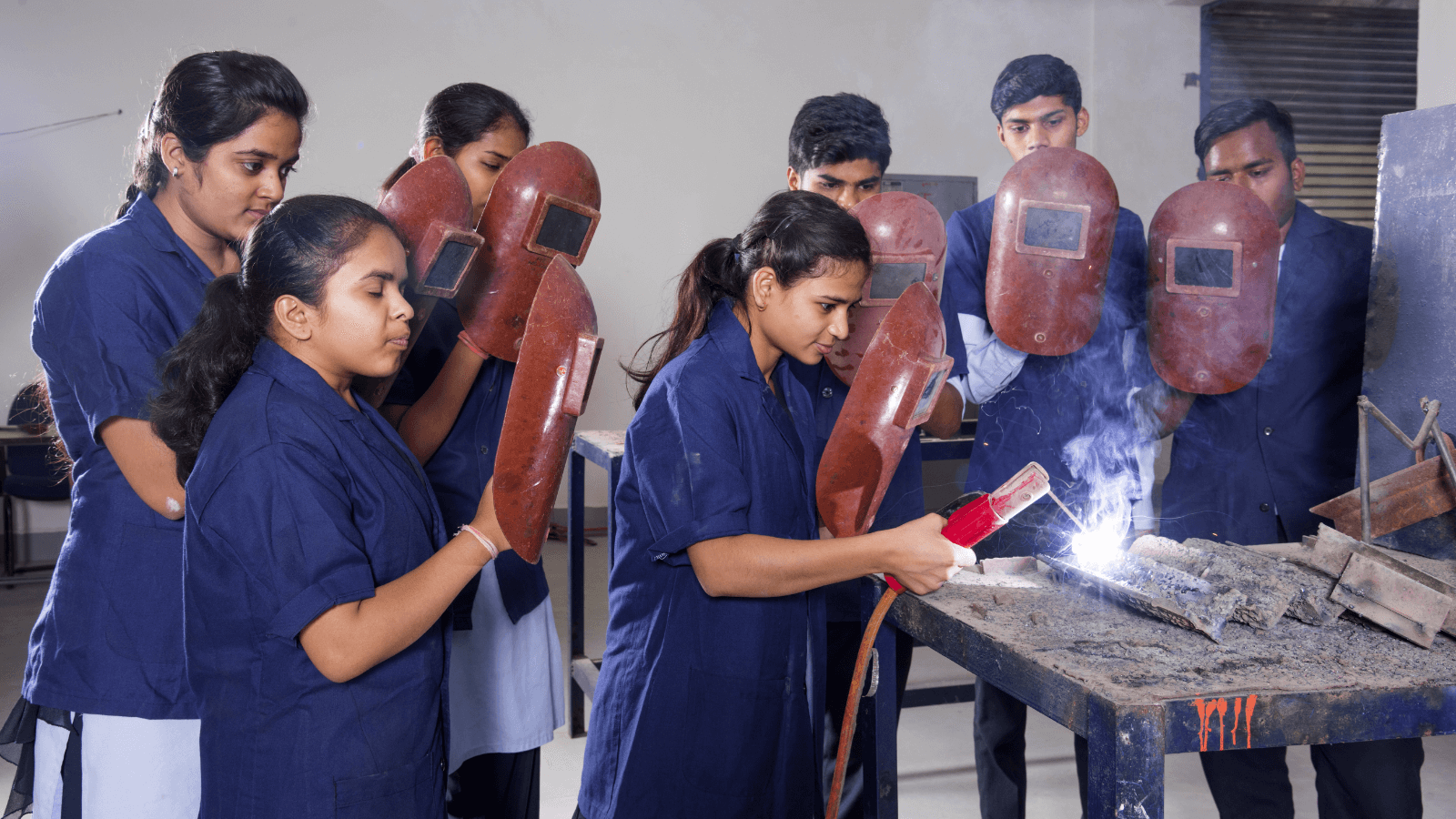
Curious case of skilled welder shortage
India is facing a shortage of skilled welders, and it’s hindering the country’s progress towards a more sustainable future. Welding skills are crucial in a range of industries, including construction, manufacturing, and infrastructure development. However, the shortage of skilled welders is making it difficult for India to meet its ambitious sustainable development goals. According to the Indian Institute of Welding (IIW) in 2020, there was a shortfall of 1.2 million welding professionals, which was expected to increase to 1.35 million in the next three years.
There are several reasons behind the shortage of skilled welders in India. One of the main factors is the lack of vocational training programs. Many young people in India are not aware of the potential opportunities and benefits of pursuing careers in welding. The low status of skilled trades is also a contributing factor. Welding is often seen as a dirty and dangerous job, which has discouraged many young people from pursuing it as a career.
To address this shortage, India needs to invest in creating more training programs for aspiring welders. These programs need to be accessible and affordable to ensure that everyone who wants to pursue a career in welding has the opportunity to do so. Additionally, the government and private sector need to work together to promote the benefits of welding as a career, such as the potential for job security, high earning potential, and opportunities for career advancement.
Another potential solution is to incentivize young people to pursue careers in welding. This could involve offering scholarships, apprenticeships, or other forms of financial support to students who are interested in welding. By providing financial incentives, India can encourage more young people to pursue welding as a career, which can help to address the shortage of skilled welders.
Promoting the benefits of sustainable welding practices is also important. Sustainable welding practices can help to reduce waste, improve energy efficiency, and contribute to a more sustainable future. By promoting sustainable welding practices, India can create more interest in welding as a career, and attract more young people to the industry.
There are several successful initiatives that have been implemented in other countries to address similar skilled labor shortages. For example, in the United States, the National Center for Welding Education and Training (NCWEAT) has been working to promote welding as a career, and to provide training and education to aspiring welders. NCWEAT offers a range of programs, from short-term training courses to degree programs, to ensure that aspiring welders have access to the training and education they need to succeed in the industry.
In conclusion, India needs to take action to address its shortage of skilled welders. By investing in vocational training programs, promoting the benefits of welding as a career, incentivizing young people to pursue welding, and promoting sustainable welding practices, India can overcome its skilled welder shortage and build a more sustainable future. Welding skills are crucial to the success of a range of industries, and addressing the shortage of skilled welders is essential if India is to meet its ambitious sustainable development goals.
